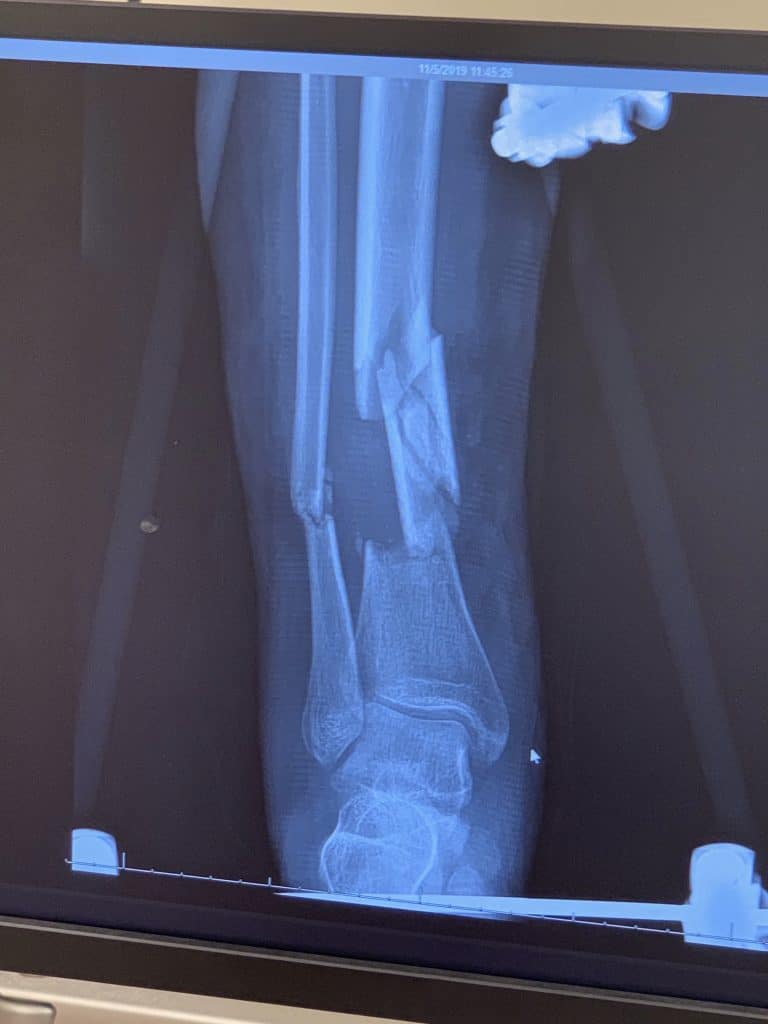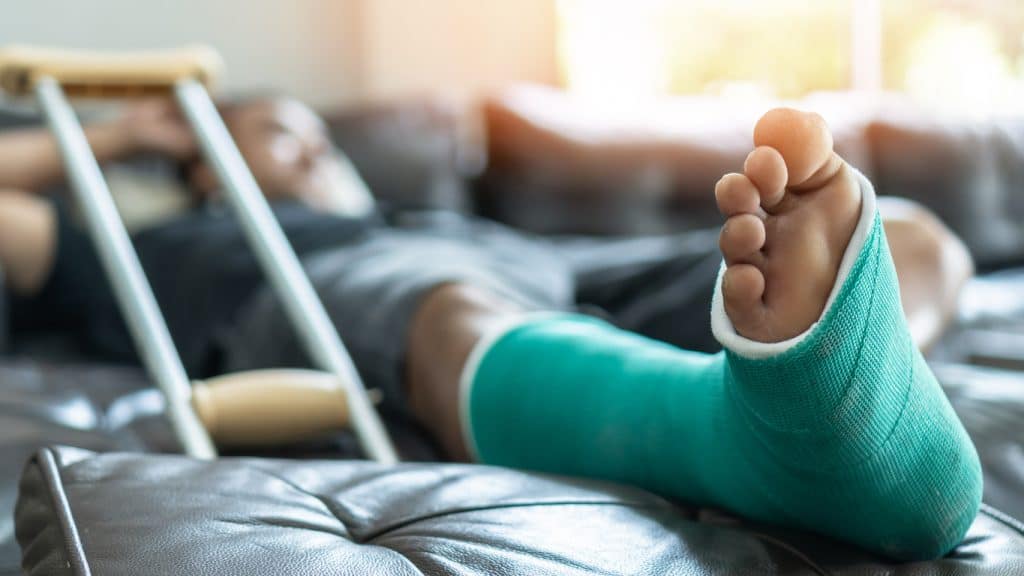Types of Fractures
A bone fracture, commonly known as a broken bone, is a common injury that affects millions of people yearly. Most types of fractures result from falls, sports injuries, and car accidents. People who engage in certain repetitive activities or have a medical condition like osteoporosis are at increased risk for broken bones.
Where the break occurs, its severity, and the break type all determine treatment type and duration. Some breaks require surgery, whereas others heal with time and immobilization in a cast or splint.
What is a bone fracture?

Bones are living tissue — while rigid, they are able to bend somewhat under pressure. When this pressure is excessive, however, it can cause the bone to break.
To diagnose the break and determine proper treatment, your orthopedic specialist will use a physical exam and one or more diagnostic imaging tests (X-ray, MRI, CT scan, or bone scan).
According to the break’s pattern/shape, cause, and location, there are 10 general types of fracture classifications.
Pattern or shape: Fractures can occur in a single line or multiple lines. Single-line fractures include oblique, transverse, and longitudinal fractures.
Fractures that don’t run in a single straight line are greenstick, comminuted, segmental, and spiral fractures.
Cause: Sometimes fracture names are based on their cause. These include stress or hairline fractures and avulsion fractures.
Location: Many fractures are classified according to the anatomical name of the bone or part of the bone they affect. Some examples are clavicle fractures, radial fractures, elbow fractures, femur fractures, pelvic fractures, hip fractures, and Talus fractures.
10 Types of Fractures

Complete Fracture
In a complete fracture, the break goes through the entire bone, separating it into two or more pieces. These pieces can be displaced or non-displaced/stable. Displaced bones have moved out of their normal position, creating a gap. The need for surgical repair is much more likely in complete fractures where the bone is displaced.
Incomplete Fracture
This type of break does not go all the way through the bone. These are a few types of incomplete fractures.
Greenstick fracture: A fracture where the bone bends and cracks but does not completely break. Greenstick fractures happen most often in children since their bones are more flexible than those of adults.
Hairline or Stress Fracture
Sometimes also called a fissure fracture, in this type of fracture, the crack is so small it may not show up on an X-ray. They usually require an MRI or CT scan for diagnosis. Stress fractures typically result from overuse or repetitive stress on a bone. Athletes are more likely to get stress fractures than the general population, and the breaks often occur in weight-bearing bones like the tibia, metatarsals, or femur.
Buckle or Torus Fracture
In this type of fracture, the bone breaks on one side, and a bump or raised buckle develops on the other side. Buckle fractures are more common in children than adults.
Open Fracture
This type of fracture is also known as a compound fracture, and it’s one where the broken bone protrudes through the skin or is exposed through a significant wound. These severe injuries require immediate medical attention to prevent infection.
Closed Fracture
In a closed (or simple) fracture, the bone remains entirely inside the body and the skin is not broken.
Transverse Fracture
Transverse fractures run horizontally across the bone. A direct blow to the bone, such as in a car accident or fall, is typically the cause of a transverse fracture.
Oblique Fracture
Oblique fractures run diagonally across the bone and typically result from excessive twisting or bending of the bone.
Spiral Fracture
A spiral fracture is a fracture that twists around a bone, resulting in a spiral-shaped break. Like oblique fractures, spiral fractures are commonly caused by excessive twisting during sports injuries or falls.
Comminuted Fracture
Comminuted fractures are those where the bone breaks into three or more pieces. A significant amount of energy is necessary to create such a severe break, such as a car accident or fall from a height.
Compression Fracture
These fractures result from a bone being compressed or crushed. They often occur alongside a degenerative condition like osteoporosis, which causes bones to become weak and brittle.
Avulsion Fracture
Avulsion fractures are those where a small piece of bone pulls away from most of the bone by a tendon or ligament. This fracture type is common in athletes and typically results from sudden, forceful movement.
Symptoms of Bone Fractures
Most types of fractures occur due to trauma, though some result from repetitive force from activities like running or playing sports. Generally, broken bones have some or all of the following symptoms:
- Pain or tenderness
- Swelling
- Bruising
- Inability to move or use that part of the body as you normally would
- A deformity or bump over the broken bone
How long does a broken bone take to heal?

The type and severity of the break determine the treatment for a broken bone. Mild breaks where the bones remain in place and aligned are commonly treated with a splint or cast. You’ll wear this immobilization device for about 4 to 8 weeks.
Your orthopedic specialist must reduce (realign) bones if your injury moved them out of place. You’ll receive some type of anesthesia to prevent feeling the pain of this procedure.
Surgeons use several types of fracture surgeries to set broken bones and hold them in place during healing. These include internal fixation, external fixation, arthroplasty, and bone grafting. You’ll work with your orthopedic surgeon to determine the best treatment for your injury and lifestyle.
Preventing Broken Bones
Falls and accidents cause most fractures, but predicting and preventing these situations can be challenging. Wear your seatbelt when driving, use protective equipment when playing sports, employ the proper equipment when reaching or working at increased heights, and don’t smoke.
Keeping your bones strong is also a good way to help them withstand accidents and injuries. Conditions like osteoporosis weaken bones, which makes them more susceptible to breaking under impact. Many people with osteoporosis are unaware they have the condition until after they’ve broken a bone. Women and adults over 50 are at increased risk for osteoporosis and benefit from a healthy diet and weight-bearing exercise to help prevent the condition.
Please contact us to speak with an orthopedic specialist about an injury or to schedule a bone density screen that evaluates the health and strength of your bones.
2 Comments
Permalink
It was interesting to me when you mentioned that excessive pressure can cause a bone to break. With that in mind, I would think that it would be important to keep a cast on a broken bone while it heals. I would think that the cast would keep the bone from moving while it is healing.
Permalink
Absolutely! You’re spot on. Keeping a cast on a broken bone is crucial for proper healing. The cast serves as a protective barrier that immobilizes the bone, reducing the risk of further injury and allowing the bone to heal correctly. It also helps to alleviate pain and discomfort by providing support and stability.